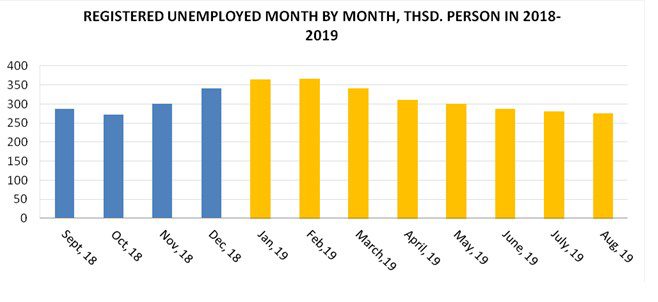
ArtBuild Hotel Group (ABHG, Kyiv) plans in October 2019 to open the Santa Sofia hotel of the economy+ class in Rome (Italy), managing partner of the company Oleksiy Yevchenko has told Interfax-Ukraine.
“In October, we open a hotel project in Rome. We have long been working in the international market as consultants, but our own hotel will appear abroad for the first time. The object is located in the tourist center of Rome, not far from the Coliseum. This is the reconstruction of a commercial apartment building for pilgrims into an economy+ hotel,” he said.
ArtBuild Hotel Group rented premises for the hotel.
The hotel has 50 rooms, a restaurant on the ground floor and a wine bar on the open roof terrace.
According to him, currently ArtBuild Hotel Group is also developing concepts for four hotels in Kyiv, another one in Rome and another in Budapest.
“Hotels will be represented in economy and midscale segments that are most popular in Kyiv now. They have different locations, but none of them will be located in the central part of Kyiv. One of them will be managed by ArtBuild Hotel Management,” the managing partner said.
ArtBuild Hotel Group is one of the first companies in Ukraine specializing in hotel fee development and consulting. The company implements hotel real estate projects in different segments.
President of Ukraine Volodymyr Zelensky has ruled to ensure compliance with 17 goals of sustainable development of Ukraine for the period until 2030.
According to decree No. 722/2019, posted on the presidential website on Monday, this document is aimed at ensuring the national interests of Ukraine in the sustainable development of the economy, the civil society and the state in order to achieve an increase in the level and quality of life of the population, observe the constitutional rights and freedoms of man and citizen.
Thus, Zelensky, supporting the global goals of sustainable development until 2030 and the results of their adaptation, taking into account the specifics of Ukraine’s development, as set out in the national report “Sustainable Development Goals of Ukraine” proclaimed by resolution No. 70/1 of the United Nations General Assembly on September 25, 2015, ruled to ensure compliance with the goals and also listed 17 such goals.

By 2021, the first Ukrainian innovation park, UNIT.City (a project of UFuture), will be built at 20%, and the amount of investment in it will reach 245 million euros.
“UNIT.City must integrate into the international innovation ecosystem. To do this, we are ready to actively invest in the project, attract global technological leaders, and interact with global financial institutions. The park has reached a new level and is an understandable partner for key industry players,” Vasyl Khmelnytsky, Founder of UFuture, said.
Today, about EUR50 million have been invested in the innovation park and 36 thousand square meters of infrastructure have been built. Three campuses, an IT-school for gifted youth, UNIT Factory, coworking Chasopys.UNIT, a free sports complex and several cafes have been opened. By the end of this year, EUR70 million will be invested in the construction of two business campuses and the first phase of UNIT.Home with a total area of 60 thousand square meters. The construction of five new business campuses, the second phase of UNIT.Home, and a school (with a total area of 110 thousand square meters) is planned to start next year with EUR125 million of investments. Thus, a fifth part of the territory of the innovation park will be built.
According to UNIT.City’s CEO Dominique Piotet, in 2020, comfortable conditions for 150 resident companies as well as for education of more than 1,200 students will be created in the innovation park. Partnership with two of the world’s leading universities is planned. Five venture capital funds, eight laboratories, and ten accelerators are expected to operate in UNIT.City next year. The top manager hopes that international events such as Web Summit, IT Arena, CES, and Davos will be held at UNIT.City in 2020.
“My goal is to ensure that in 2025, when 90% of UNIT.City is built, the world appreciates Ukraine no longer for outsourcing, but for the high quality of innovations, startups. I would like the world to perceive our ecosystem as a place where ideas grow into world-famous companies. Where billion-dollar unicorn startups appear. I would like the next Tesla or iPhone to be born here in UNIT.City,” Dominique Piotet said.
The symbol of the “New Era” of the innovation park’s development is the opening of the unique “Beacon” art object at UNIT.City square. With the onset of darkness, light gradually rises along the two sides of a 60-meter factory pipe lighting a bright beam at the top. The diameter of its base is 3.5 m, and the length can reach 100 meters.
Inside the art object, a dome screen and a projection system were installed by a Ukrainian company, developer of visual solutions and technologies for planetariums and museums, Front Pictures. The image on the screen is being created by four projectors under the control of the Screenberry media server. The planetarium can be controlled remotely through the application on the tablet. “Beacon” was designed by a British artist, Sebastian Kite. The concept of the project was implemented by UDP development company.
ADDITIONAL INFORMATION
UFuture is a holding company of Ukrainian entrepreneur Vasyl Khmelnytsky that integrates his business and impact-investment projects. The Company has a diversified portfolio of assets in real estate, industry, infrastructure, renewable energy, pharmaceuticals, and IT. As of today, UFuture’s assets are estimated at $550 million with total capitalization of the businesses invested in exceeding $1 billion.
UNIT.City is Ukraine’s first innovation park. It is the location where matchless infrastructure and all-inclusive ecosystem enable high technology, innovative and creative businesses to happen and flourish. The goal is to become the center of innovations and a one-point entry into Ukraine for investors, partners and new technology from all over the world. The mission of UNIT.City is to create a unique innovation platform where advanced companies, start-ups and mavens get an opportunity to cross paths and work together ramping up their growth.
Number of unemployed in Ukraine in 2018-2019

Investment of human capital in national wealth in Ukraine is much lower than in European countries, according to a report of the World Bank.
According to the World Bank’s study of the sphere of education in Ukraine, investment of human capital into national wealth in Ukraine is 34% of total national wealth. For comparison, in low-income countries this indicator is 41%, in Europe and Central Asia – 62%, and on average around the world – 64%.
The World Bank said that in Ukraine the percentage of people with higher education is more than 80%, which exceeds the figures of the EU (68%) and countries of the Organization for Economic Co-operation and Development (OECD) (74%), but the level of functional literacy among adults is behind indicators of these countries.
In addition, it is said that in Ukraine, there is a gap between education and employment, especially among young university graduates.
Other areas of concern include: unequal access to schooling, a gap in education among students in urban and rural schools, and less likely that graduates from rural schools will go to higher education (40% of graduates from rural schools compared to 70% of graduates in cities).
The World Bank said that about 50% of Ukrainians do not believe that secondary education provides everyone with the same opportunity of studying for free, and 70% believe that corruption in higher education is very common.
At the same time, according to the World Bank, Ukraine spends 6% of GDP on education, which is significantly more than in OECD countries (4.4%).
Among other things, the World Bank said that Ukraine has a too wide network of schools and universities, which is one of the reasons for the high level of expenses. There are 11 students per teacher in Ukraine, and in the OECD countries this indicator averages 13.1.
EUROPEAN COUNTRIES, HUMAN CAPITAL, INVESTMENT, NATIONAL WEALTH

The number of employed IT specialists in line with the Labor Code of Ukraine is 2-3%, and the rest of IT specialist work as private entrepreneurs or under a contract, Vice President for Strategy and Technologies at GlobalLogic Ukraine Andriy Yavorsky has said in an interview with Interfax-Ukraine.
According to him, this situation has arisen due to high taxes in official employment – more than 40%.
“In the current international market, this kind of tax burden is greater than in Poland, and in fact comparable to Germany. It is clear why Poland sets such prices. It is in the same legislative field with Europe, in the same legal field. There are requirements to General Data Protection Regulation (GDPR), there are no borders, good infrastructure, while Ukraine is perceived in this respect as a country that should be “cheaper.” So what’s the point of paying such money in Ukraine when it can be spent without risks on specialists in America or Europe? And this forces companies to collaborate with specialists working as private entrepreneurs,” he said.
Yavorsky said that in order to accelerate the process of transition from an outsourcing model to a product model in Ukraine, the country needs reforms in economic policy and legislative acts.
“We need engineers, capital and entrepreneurs. At least we have good engineers. In order for capital to appear, we need reforms in economic policy and legislative acts,” the top manager said.
According to Yavorsky, for entrepreneurs to appear, it is necessary to create conditions that will allow them to stop their outflow abroad. “When Ukraine has a stable economic policy and the possibility of raising capital, our entrepreneurs will return and will be able to build a lot, already within and for the benefit of their own country,” he said.